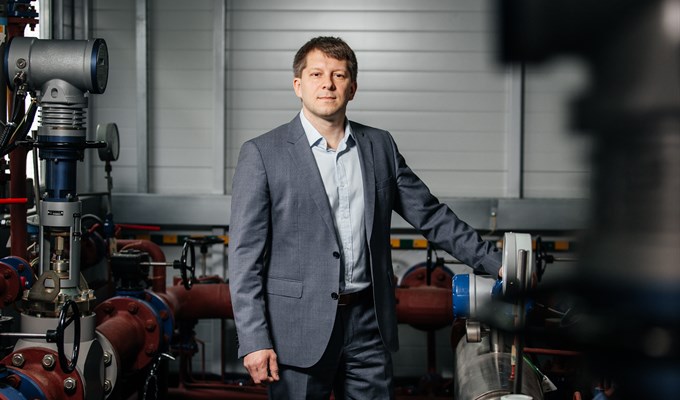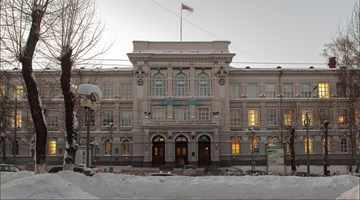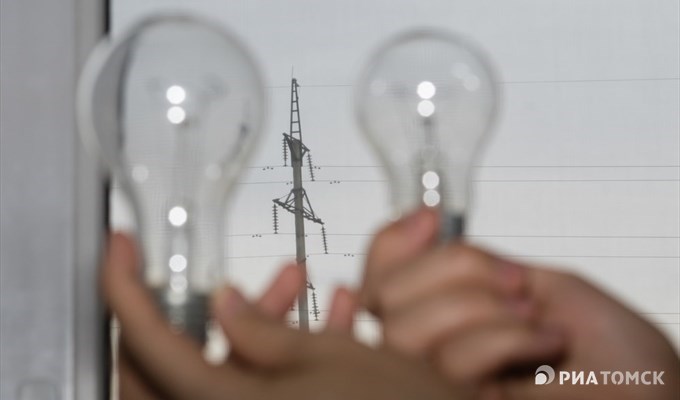TOMSK, Nov 30 – RIA Tomsk. The technological hydrogen valley, which began to "grow" in Russia at the initiative of TPU, can make hydrogen energy more competitive. The main argument of skeptics is the high cost of such energy, although there are infinitely many raw materials - water, natural gas. Why this topic is not just a hype, explains TPU Vice-Rector Artem Boev.
Why is hydrogen energy good?
"Since 2015, the redistribution of the energy balance of Europe and the world began: at the 21st Conference of the Parties of the United Nations Framework Convention on Climate Change held that year, all developed countries, including Russia, presented "Long-term low greenhouse gas emission development strategies".
Each of the energy strategies included natural gas (CH4) and some of them included hydrogen. It is a low-carbon fuel, that is, one that produces less carbon dioxide emissions. But if natural gas is a fossil natural resource, it must be extracted from the bowels of the earth, then hydrogen is the most common element in the universe in nature. In the form of compounds, it is literally everywhere, that is, its reserves are bottomless.
© пресс-служба Томского политехнического университета
"There is one big "but": hydrogen is expensive to extract (e.g. from the water). All production technologies are not profitable yet, in relation to traditional energy sources", - TPU Vice-Rector for Technological Development and Entrepreneurship Artem Boev said.
Steam reforming and methane pyrolysis are the cheapest ways to produce hydrogen, electrolysis is several times more expensive in terms of energy consumption. The prime cost is determined by the cost of natural gas or water and electricity. Europe, of course, is especially interested in obtaining hydrogen by electrolysis of water - this is a solution to the issue of their energy independence.
Europe gradually moving towards this goal. So, now in Germany at night energy from renewable energy sources actually costs zero - due to the lack of consumers. This energy can be converted into a chemical energy carrier - hydrogen, and thus accumulated.
But so far, of course, free energy is not enough for this. For example, the production of 69 million tonnes of H2 by modern electrolysers will require 3600 terawatt-hours of electricity, which is more than the total annual electricity production of the European Union”, - says Boev.
How are alternative types of energy developed in Russia?
"It must be admitted that the "survival rate" of alternative energy in Russia is low. The energy of geothermal sources is used in Kamchatka. There is a great potential for solar energy in the North Caucasus, regions adjacent to the Black and Caspian Seas, in South Siberia and the Far East, and so on. Solar power plants can be found there.
© предоставлено пресс-службой ТПУ
But so far this is being done mainly in those regions that do not have their own carbon or nuclear energy. That is, in fact, alternative energy is used out of despair.
In my opinion, now the most realistic option for using alternative fuels (and hydrogen in particular) in Russia is in the northern remote regions, such as the Arctic, autonomous villages where there is no electricity, and it is very expensive to bring gas or diesel fuel there.
But if we talk about Europe, the issue of alternative energy is acute for them, because they do not have their own energy carriers in the form of oil and gas. They have coal, but they are gradually abandoning it due to the large CO2 emissions during combustion. Nuclear power is recognized by very few countries (France, Finland, Slovakia, Great Britain, Poland, Hungary, Romania, Czech Republic).
In fact, alternative energy sources (wind, solar, tidal, geothermal) account for a fairly large share in the energy balance of the European Union - up to 20%.
So now, I think, is a good time to develop hydrogen fuel as well. After all, 20 years ago, when they first started talking about alternative energy sources, they were very expensive. But over time, thanks to the participation of large corporations, power generation devices have become massive and therefore more affordable", - Boev said.
© РИА Томск. Павел Стефанский
"Every year $20-25 billion is invested in the transition to hydrogen in the world, Europe invests the most. Then come Japan and China", - Artem Boyev told.
Can alternative energy squeeze out traditional energy?
“I think that alternative energy will occupy its own niche and every year occupy an increasing market share. This is unlikely to hit traditional energy sources - their share in the total energy balance, of course, will decrease, and coal will suffer the most, but in general, the growth of energy consumption all over the world will keep the demand for any kind of energy high for a long time.
It must be understood that hydrogen is not a substitute for oil and gas. It has its own niches: energy storage and transportation, distributed energy. The International Hydrogen Council estimates that by 2050 hydrogen will account for 18% of total global energy demand. But this requires solving a number of problems, such as hydrogen recovery, transportation and storage.
Our university has a lot of interesting research here: scientists are developing technologies for producing hydrogen using sunlight, producing it from natural gas without CO2 emissions, processing biomass and waste (including plastic) into hydrogen, and so on. The technological groundwork is very good, but one cannot cope with such tasks alone", - Boev told.
Who can we team up with?
“The format of “hydrogen valleys” - R&D centers for the development of new energy systems, overcoming uncertainties, increasing the concentration of competencies in hydrogen technologies - is well established all over the world. For example, they are in Japan, Germany and the Netherlands.
At the core of such centers are universities. Tomsk Polytechnic University initiated the creation of the Technological Hydrogen Valley consortium, combining for a start six leading educational and scientific organizations - in addition to TPU, the consortium included Boreskov Institute of Catalysis SB RAS, Institute of Problems of Chemical Physics of the Russian Academy of Sciences, Topchiev Institute of Petrochemical Synthesis of the Russian Academy of Sciences, Samara State Technical University and Sakhalin State University.
The first event of the consortium will be a joint scientific and technical conference. The next step for TPU will be to submission of documents for participation in the competition for the innovative science and technology center of Tomsk Polytechnic University - Hydrogen Valley in the Russian Federation. The documents are actually ready, we are working out the interest of industrial partners, it is high", - sums up Boev.